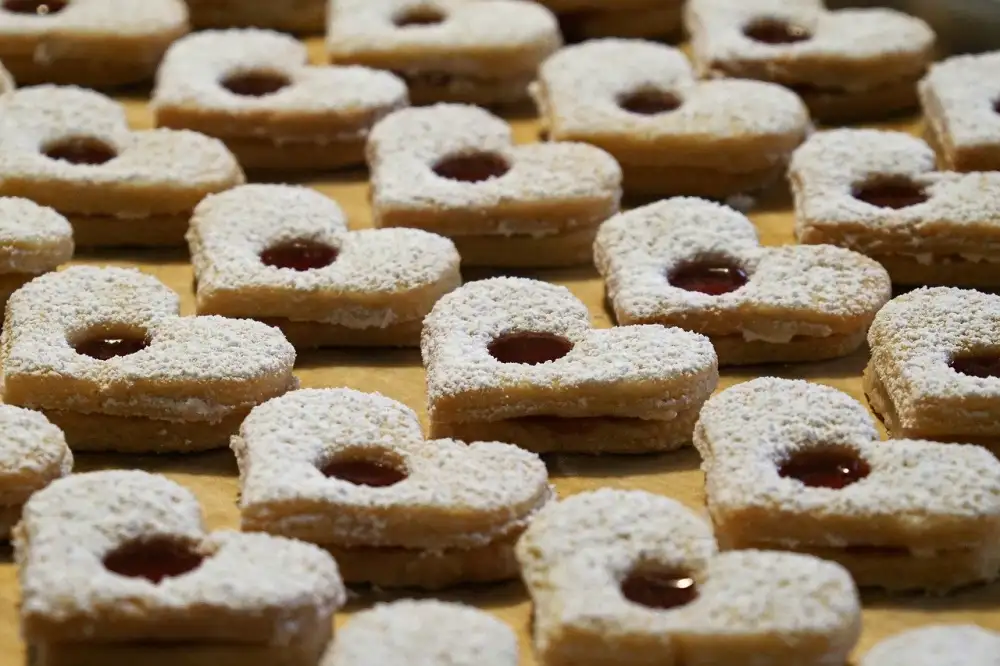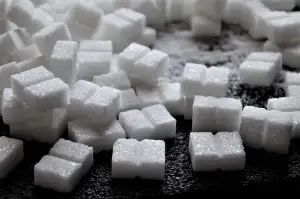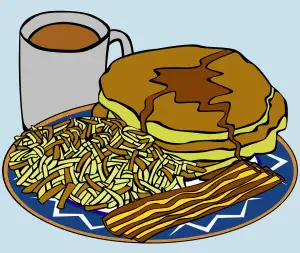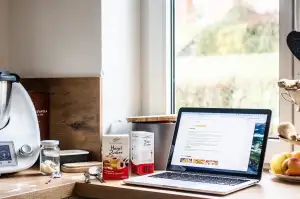Unlock the Magic of Baking: Exploring the Wonders of Baking Powder

Baking powder is a magical ingredient that plays a crucial role in the world of baking. Whether you're whipping up fluffy cakes, tender cookies, or perfectly risen bread, baking powder is your secret weapon for achieving light and airy results. In this article, we will explore the wonders of baking powder, from its composition and how it works to its various types and uses in baking. Get ready to unlock the magic of baking with this essential ingredient!
What is Baking Powder?
Baking powder is a leavening agent commonly used in baking to help dough and batter rise. It is a combination of an acid, a base, and a filler. The acid reacts with the base when it is mixed with liquid, creating carbon dioxide gas bubbles. These bubbles expand during baking, causing the mixture to rise and create a light and fluffy texture. Baking powder is an essential ingredient in many baked goods such as cakes, cookies, and muffins.
How Does Baking Powder Work?
Baking powder is a leavening agent that helps baked goods rise and become light and fluffy. It works through a chemical reaction between its ingredients – usually baking soda, an acid, and a moisture-absorbing agent.
When baking powder is mixed with wet ingredients in a recipe, the acid reacts with the baking soda to produce carbon dioxide gas. This gas gets trapped in the dough or batter, causing it to expand and create air pockets. As the baked goods heat up in the oven, these air pockets expand further, resulting in a light and airy texture.
The moisture-absorbing agent in baking powder helps to control the release of carbon dioxide during baking. This ensures that the leavening process happens gradually rather than all at once, preventing the baked goods from collapsing.
Understanding how baking powder works is essential for achieving successful results in your baking endeavors. So let's explore the different types of baking powder next!
Types of Baking Powder
There are two main types of baking powder available in the market: single-acting and double-acting baking powder.
1. Single-acting baking powder: This type of baking powder reacts with moisture as soon as it is mixed with the wet ingredients in your recipe. It starts releasing carbon dioxide gas immediately, causing the batter or dough to rise. It is important to bake the batter or dough right away after mixing, as the leavening power diminishes quickly.
2. Double-acting baking powder: This is the most commonly used type of baking powder. It contains two types of acids that react at different stages during the baking process. The first acid reacts when it comes into contact with liquid, causing some immediate rising. The second acid reacts when exposed to heat in the oven, providing a final burst of leavening power. This ensures that your baked goods rise evenly and have a light texture.
Both types of baking powder are readily available in most grocery stores and can be used interchangeably in recipes unless specified otherwise. It's important to check the expiration date on the packaging to ensure its effectiveness, as expired baking powder may not provide optimal results in your baked goods.
Baking Powder vs. Baking Soda: What's the Difference?
Baking powder and baking soda are both leavening agents used in baking, but they have some key differences. Baking powder is a combination of an acid (such as cream of tartar) and a base (such as baking soda), along with a starch to prevent clumping. It is a complete leavening agent on its own and does not require any additional ingredients.
On the other hand, baking soda is pure sodium bicarbonate, which needs an acidic ingredient (like lemon juice or vinegar) to activate it and create carbon dioxide bubbles that help the dough or batter rise.
The main difference between the two lies in their chemical composition and how they react with other ingredients. Baking powder is typically used in recipes that contain acidic ingredients like yogurt or buttermilk, while baking soda is used when there are already acidic components present in the recipe.
It's important to note that you cannot substitute one for the other directly without adjusting the recipe. Using too much baking soda can result in a bitter taste, while using too much baking powder can make your baked goods taste soapy. Understanding this distinction will help you achieve the perfect texture and flavor in your baked creations.
How to Use Baking Powder in Baking
Using baking powder correctly is essential for achieving light and fluffy baked goods. Here's how to use it effectively:
1. Measure accurately: Follow the recipe's instructions for the amount of baking powder needed. Too much can result in a bitter taste, while too little may cause your baked goods to be dense.
2. Sift with dry ingredients: To ensure even distribution, sift the baking powder with the other dry ingredients like flour, sugar, and salt.
3. Activate with liquid: Baking powder needs moisture to work its magic. Add it to recipes that include wet ingredients like milk or water.
4. Mix gently: Once you've added the baking powder, mix the batter or dough just until combined. Overmixing can deflate the air bubbles created by the baking powder.
5. Bake immediately: Baking powder starts working as soon as it comes into contact with liquid, so avoid letting your batter sit for too long before baking.
Remember, using too much or too little baking powder can affect the texture and taste of your baked goods. So follow these tips to ensure perfect results every time you bake!
Tips for Using Baking Powder Effectively
1. Measure accurately: Use the recommended amount of baking powder as stated in the recipe. Too much or too little can affect the texture and rise of your baked goods.
2. Sift it: Sifting the baking powder with the dry ingredients helps to distribute it evenly, ensuring consistent results.
3. Mix gently: When incorporating baking powder into your batter, mix gently to avoid overmixing, which can cause the air bubbles created by the baking powder to deflate.
4. Bake immediately: Once you add liquid to your batter containing baking powder, it begins to react. To maximize its effectiveness, bake your batter immediately after mixing.
5. Store properly: Keep your baking powder in a cool and dry place, away from moisture and heat sources. This will help maintain its potency and extend its shelf life.
6. Check expiration date: Baking powder loses its effectiveness over time, so always check the expiration date before using it. Expired baking powder may not produce the desired results in your baked goods.
By following these tips, you can ensure that your baked goods rise beautifully and have a light and fluffy texture every time you use baking powder in your recipes.
Common Mistakes to Avoid When Using Baking Powder
1. Using expired baking powder: Always check the expiration date on your baking powder before using it. Expired baking powder loses its effectiveness and can result in flat and dense baked goods.
2. Overusing or underusing baking powder: It's important to use the right amount of baking powder for your recipe. Too much can cause a bitter taste, while too little may result in a lack of rise in your baked goods.
3. Not sifting the dry ingredients: Sifting the dry ingredients, including the baking powder, helps to evenly distribute it throughout the batter, ensuring a consistent rise.
4. Mixing too vigorously: When incorporating the baking powder into your batter, be gentle. Overmixing can cause the carbon dioxide bubbles to escape, resulting in a less fluffy texture.
5. Not preheating the oven: Preheating the oven is crucial for proper activation of the baking powder. If you place your batter in a cold oven, it may not rise as expected.
6. Letting the batter sit for too long: Once you mix your batter with baking powder, it's important to bake it immediately. Allowing it to sit for too long can cause the leavening agents to lose their potency.
By avoiding these common mistakes when using baking powder, you'll ensure that your baked goods turn out light, fluffy, and delicious every time!
Baking Powder Substitutes
If you find yourself in the middle of a baking project and realize you're out of baking powder, don't panic! There are a few alternatives you can use as substitutes:
1. Baking Soda: Baking soda is a common substitute for baking powder. However, keep in mind that it is much stronger, so you'll need to use less. For every teaspoon of baking powder called for in the recipe, use only ¼ teaspoon of baking soda.
2. Cream of Tartar: Cream of tartar is another option if you have it on hand. Mix ½ teaspoon of cream of tartar with ¼ teaspoon of baking soda to replace one teaspoon of baking powder.
3. Buttermilk or Yogurt: If your recipe calls for both baking powder and an acidic ingredient like buttermilk or yogurt, you can omit the baking powder altogether and rely on the acid in these ingredients to provide leavening.
Remember, when substituting with any alternative, the texture and taste may vary slightly from the original recipe. It's always best to have some extra baking powder on hand to ensure consistent results.
In conclusion, baking powder is a magical ingredient that can truly enhance your baking experience. Its ability to create light and fluffy textures, as well as its role in leavening baked goods, makes it an essential tool in the kitchen.
By understanding how baking powder works and the different types available, you can confidently use it in your recipes. Remember to follow the recommended measurements and expiration dates for optimal results.
Using baking powder effectively involves incorporating it into your dry ingredients and activating it with a liquid. This ensures a consistent rise and even distribution of bubbles throughout your batter or dough.
To avoid common mistakes, be mindful of overmixing or using too much baking powder, as this can lead to dense or bitter results. Additionally, consider alternative substitutes if you find yourself without any on hand.
So go ahead and unlock the magic of baking by embracing the wonders of baking powder. Your cakes will be lighter, your cookies will be fluffier, and your breads will rise to new heights. Happy baking!
Published: 21. 11. 2023
Category: Food



